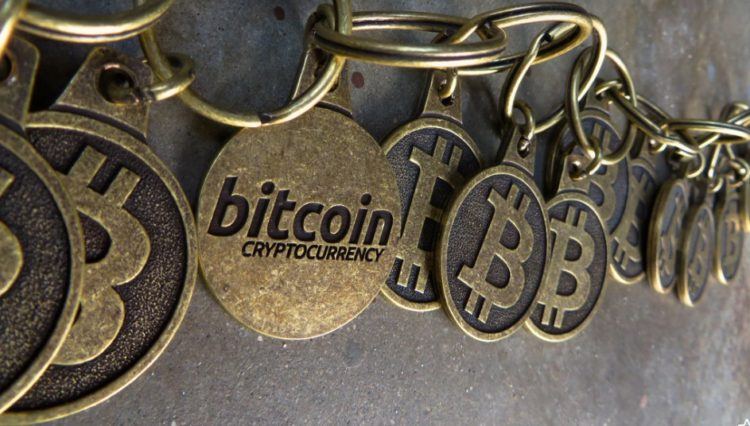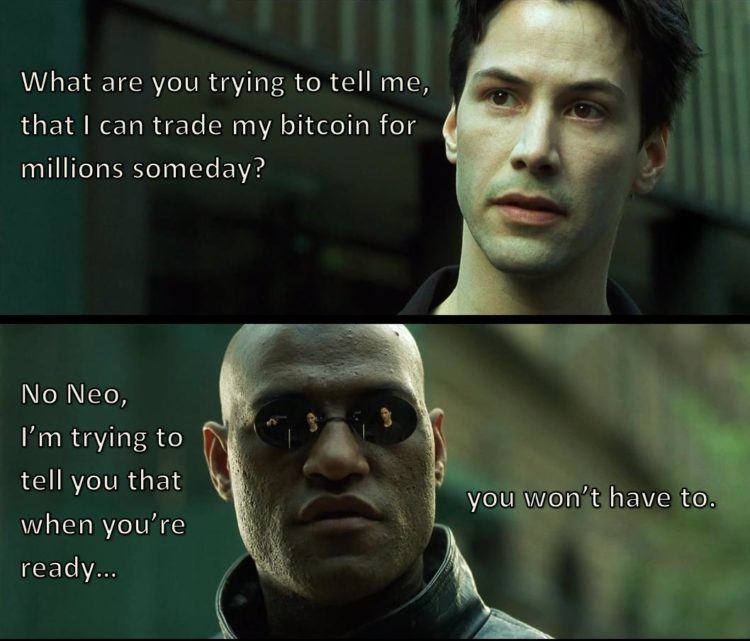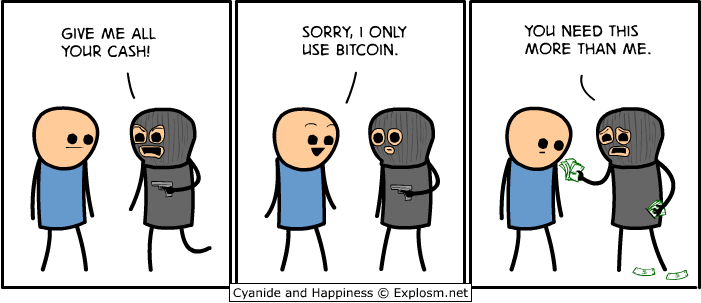
Photo credit: BTC Keychain.
“It may be farfetched,” Sandeep Goenka, the CEO of Zebpay explains to me, “but we want bitcoins to even be used for daily transactions.”
It is farfetched, but not a surprising statement. Bitcoin tends to inspire these types of proclamations. It was launched in 2009 by Satoshi Nakamoto – a pseudonym – and is a virtual currency that is regulated by no bank or government. It has been declared dead, resurrected, and managed to drag itself through the weeds and back into the limelight multiple times – enough so that it may be time to admit that its fan following is dedicated enough to keep it living.
Subreddit r/bitcoin is a testament to this fact. It gets at least five submissions a day. Sometimes, conversations revolve around the possibility of the currency reaching “mass adoption”. Other times, users post links pointing out alleged wrongdoings of financial giants, like Mastercard, which was recently sued for US$18.6 million in damages for purportedly overcharging customers. Here and there, conversations about bitcoin in India make their way into the fold.
In 2013, Mahin started buysellbitco.in, India’s first company to let people trade money for bitcoins. It was soon raided by India’s central bank.
Users sometimes ask whether the country of 1.25 billion has the potential to be bitcoin’s next big market. One user, DoctorDbx, urged in a post two years ago – “stop looking to India as a savior.” But the comments are filled with believers, with others citing India’s love for alternate currencies like gold, the many millions its citizens spend sending money across borders, and the volatile value of the Indian rupee as reasons that the digital currency might have room to grow.
Zebpay’s other founder Mahin Gupta, whom Sandeep refers to as the “father of bitcoin,” is an active commenter on the Reddit board, often evangelizing bitcoin in India.
“You can buy Flipkart, Amazon, Makemytrip, Dominos, BookMyShow, PVR vouchers from Zebpay,” he comments on one post. “So kind [of] you can buy almost everything using bitcoin in India now.”
Why take a chance?
Zebpay is an e-wallet where users can add money from bank accounts, convert it into bitcoin, and use it for things like trade or to buy vouchers for sites. They can also convert it back into another currency and send it to their bank accounts.
With so many safer options, why would a regular person want anything to do with the unpredictable world of bitcoin?
“Three reasons,” Sandeep starts.
“The first – it can be an alternative investment. They’re increasing in value tremendously over the past four to five years. They’re officially the best performing currency this year. It’s gone from trading at just US$250 at the beginning of the year to US$600 now. That’s 2.5 to 3 times in just a year.”
“The second is for freelancers,” he says. “Services like Western Union charge a lot of money and banks are slow to transfer. Bitcoins transfer instantly and can be converted into indian rupees. They can also use it for their Flipkart purchases or whatever.”

Photo credit: Imgur.
“The third is for daily transactions,” he says. “[Japanese ecommerce site] Rakuten accepts bitcoin. It’s starting to become something that people can use anywhere.”
Sandeep and Mahin are both stalwart bitcoin believers. In 2013, Mahin started buysellbitco.in, India’s first company to let people trade money for bitcoins. But, when India’s central bank, the Reserve Bank of India, heard that there were signs of the digital currency gaining traction in the country, it became wary. It asked: what if it was being used to anonymously fund terrorist activities? Or to buy illegal things?
In December 2013, fifteen officers raided buysellbitco.in’s office. Nothing was found, A few weeks later, the central bank released a note stating that it had no desire to regulate bitcoin.
The duo have taken leaps and bounds in order to avoid those ambiguities this time around. To sign up with Zebpay, a user needs to submit a copy of their PAN (permanent account number) card, an income tax identification system for Indian nationals. Each transaction is also tied to a mobile number.
While that betrays some of the original philosophies of bitcoin – which promised to allow for anonymous transactions – the possibility of tracking it means it’s easier for the currency to gain acceptance in the country of 1.25 billion.
“There is friction with the PAN card,” Sandeep admits, insinuating that verification is a necessary procedure.
Not just for the geeky
Bitcoin often comes with the stereotype that it’s used by the techie vigilante, or the disruptive anarchist. Zebpay wants to take it mainstream.
“We started out with the goal that non-geeky, tech-savvy people should use bitcoin,” Sandeep says.
“We wanted it to be an experience that a user is already used to,” he says. “Usually, bitcoin wallets are filled with different characters and QR codes and numbers – we wanted to make it as similar to a regular money trading experience as possible.”
Zebpay’s homepage is filled with educational resources, including a clearcut video titled “What is Bitcoin?”.
It only has a mobile app. Once a user signs up with their PAN card, they’re prompted to buy and trade bitcoin.
Zebpay launched in 2015. Between July 2015 and March 2016, it processed US$15 million in trade turnover. In just the last few months, that number has increased to US$37 million. “We’re more or less doubling our numbers every two or three months,” he says.
Bitcoins can be bought in the range of US$7.50 to US$7,500. On top of transferring bitcoins to others, Zebpay can be used for topping up phones and buying vouchers on sites like Domino’s and e-wallet Freecharge.
“We sell about US$1,500 worth of talktime and US$480 worth of vouchers daily. It’s gaining popularity – but numbers are still relatively small.”
Most users on the site convert their currency into bitcoin and trade it against other currencies like the US dollar. “We do US$7.5 million to US$11 million of trading every month. Of course, that’s peanuts compared to neighbors – China’s bitcoin tradeoff is between US$7,500 and US$30,000 in just a single day.”
The more trusted a user you are, the more money you can transfer in. You also get better rates. “We give the highest rates to our VIP users,” he says. “We believe we have one of the tightest margins in the industry.”
A mining center?
As of September 12, 2016, there were 15.8 million bitcoins in circulation. These are the ones that are used for trading and purchasing goods. The bitcoin market is capped off at 21 million bitcoins and the remaining 6.2 million are discovered by mining, which is a way to verify bitcoins and add new ones into circulation.
Every time a new bitcoin transaction is verified, it is added to the blockchain, which is a tightly sealed box that records past transactions. Miners get money from each new bitcoin, including a subsidy of the newly created ones as well as a transaction fee. Mining gets more difficult with each new bitcoin, as bitcoin market watchers say that the growth rate of new bitcoins will halve every four years.
Sandeep believes the currency’s volatility will change as the market matures.
China was – and still is – the epicenter of these activities. Stories galore recount dimly-lit rooms in the country where people sit around mining bitcoin all day. One Reddit user asks – is India the next place for the activities?
Bitcoin got a blow when one of its most important developers, Mike Hearn, declared the currency dead in January of this year. One of his main reasons is the basic philosophy of mining. Bitcoin was now controlled by those in China, he said, which had a negative effect on the fees that people were charging and didn’t move smoothly because of the country’s stringent internet censors.
In that respect, India has some advantages compared to China. Unlike the world’s biggest market, India doesn’t place strict censors on its internet, making bitcoin movement much more seamless.
Two good reasons for adoption
Zebpay requires bank accounts to transfer in money, which means it misses out on a large market of unbanked people. It’s also a country that relies heavily on cash. “We stay away from cash,” says Sandeep.
But the reasons that those with bank accounts might consider bitcoin are legitimate.
“Considering the volatility in developing market currencies like the rupee, it’s not surprising that people in India would be exploring alternatives,” Greg Schvey explains to Wall Street Journal. He heads digital currency research for The Genesis Block.
There are also remittances – money sent to people across borders – which are higher in India than anywhere else in the world. It pulled in about US$69 million in remittances in 2015. That means that remittance fees are also exorbitant in India.
One potential usage of bitcoin is sending money across borders for minimal extra charges. It’s also faster than most banks or external services and allows for the transfer of small amounts.
Long way ahead

Photo credit: Cyanide & Happiness.
There has been increasing adoption for the currency across the country. An artisan from Kerala sold his artwork for bitcoin last year. Companies like ePaisa have even signed on a handful of brick and mortar stores, letting customers pay via bitcoin using their mobiles at the store itself.
Regulations for the currency may soon enter the fray, and that’s just alright says Sandeep. “Bitcoin over the last year is becoming increasingly regulated,” he says. “Japan is declaring it as money. The ECB has declared that no EU nation can apply VAT on bitcoin.”
Sandeep also believes the currency’s volatility will change as the market matures. “Bitcoin is a new technology and a small market,” he adds. “The entire market cap is just around US$10 billion. That means that any change, any sentiment, has a strong impact on the market. Small changes in demand and supply have a great impact.”
There is competition from other digital currencies, like Ethereum, which uses blockchain technology to power its digital currency, Ether. Other bitcoin wallets in India include Unocoin and Coinsecure. Unocoin has even launched its own payment gateway, which lets users pay directly with bitcoins on sites that integrate it – that’s a step beyond Zebpay’s voucher strategy.
Zebpay has raised US$1.1 million in series A funding. Saurabh Agrawal is its third co-founder, along with Sandeep and Mahin.
“Before this, Saurabh helped co-found Red Events, which has now become India’s largest event management company,” says Sandeep. “Seven of his weddings have been profiled on CNBC’s My Big Fat Indian Wedding.”
Sandeep worked at a family business that handled manufacturing, and also co-founded Blynk, a company that produced hospitality software. “I was also an angel investor in the middle for a few years,” he says. “That’s when I stumbled upon Mahin and got to chatting.”
“We realized – this can fundamentally change the way the world operates and it’s too big to be on the sidelines,” he says.
The competition is an important aspect of any maturing ecosystem, says Sandeep. “Competition is important,” he answers. “It gives users choices and makes them feel that there are many legitimate companies out there.”
In many ways, bitcoin’s success is dictated by how dedicated its fans are to using it. But for it to get to daily usage, there’s still a long path ahead.
Sandeep is steady in his belief. “We believe that it will change the way the financial economy will work,” he says.
“We’re on track to do US$1.5 million of trading this year,” he adds. “Each and every metric that we’ve planned monthwise is on track. It’s a user-driven revolution that’s happening – it’s not top down. Users are demanding bitcoin. “
This post After hiccups, this team looks for a way to bring Bitcoin into the mainstream appeared first on Tech in Asia.
from Tech in Asia https://www.techinasia.com/zebpay-takes-bitcoins-mainstream
via IFTTT
No comments:
Post a Comment